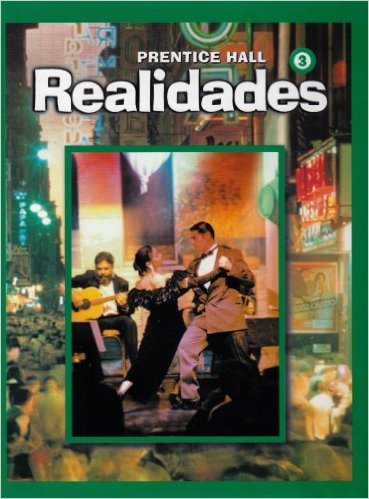
All Solutions
Page 125: Actividad 18
In the first sentence, we have mentioned: “estar en forma” (be in shape).
The advice that suits the best is d., having a balanced diet and avoiding soda.
Write any advice you like using Ud. or Uds. form.
To form formal command for regular verbs follow these steps:
1.Conjugate the verb in the first person singular present form
2.Remove “o” ending
3.Add “-e/-en” for “-ar” ending verbs or “-a/-an” for “-er” and “-ir” ending verbs
For formal commands affirmation and negation are formed the same way, for negation just simply add “no” before the verb.
Hagan más ejercicios y coman saludable.
In the second sentence, we have mentioned: “no tenemos energía”.
The advice that suits the best is f., since we know that lack of iron leads to lack of energy.
Write any advice you like using Ud. or Uds. form.
To form formal command for regular verbs follow these steps:
1.Conjugate the verb in the first person singular present form
2.Remove “o” ending
3.Add “-e/-en” for “-ar” ending verbs or “-a/-an” for “-er” and “-ir” ending verbs
For formal commands affirmation and negation are formed the same way, for negation just simply add “no” before the verb.
Tomen vitamina C junto con las vtaminas con hierro.
In the third sentence, we have mentioned: “tengo tos” (I have a cough
).
The advice that suits the best is e., since we know that for cough we take syrup.
Write any advice you like using Ud. or Uds. form.
To form formal command for regular verbs follow these steps:
1.Conjugate the verb in the first person singular present form
2.Remove “o” ending
3.Add “-e/-en” for “-ar” ending verbs or “-a/-an” for “-er” and “-ir” ending verbs
For formal commands affirmation and negation are formed the same way, for negation just simply add “no” before the verb.
Tome pastillas para dolor de cabeza también.
In the fourth sentence, we have mentioned: “calcio” (calcium).
The advice that suits the best is b., since we know that yogurt and milk contain calcium.
Write any advice you like using Ud. or Uds. form.
To form formal command for regular verbs follow these steps:
1.Conjugate the verb in the first person singular present form
2.Remove “o” ending
3.Add “-e/-en” for “-ar” ending verbs or “-a/-an” for “-er” and “-ir” ending verbs
For formal commands affirmation and negation are formed the same way, for negation just simply add “no” before the verb.
Tome yogur o leche en desayuno cada día.
In the fifth sentence, we have mentioned: “fiebre” (fever).
The advice that suits the best is a., since we know when having a fever we use a thermometer.
Write any advice you like using Ud. or Uds. form.
To form formal command for regular verbs follow these steps:
1.Conjugate the verb in the first person singular present form
2.Remove “o” ending
3.Add “-e/-en” for “-ar” ending verbs or “-a/-an” for “-er” and “-ir” ending verbs
For formal commands affirmation and negation are formed the same way, for negation just simply add “no” before the verb.
Descanse y tome mucha agua.
In the sixth sentence, we have mentioned: “comimos mucha grasa y azúcar” (we ate a lot of fat and sugar).
The advice that suits the best is c., avoiding junk food and soda they wouldn’t feel bad.
Write any advice you like using Ud. or Uds. form.
To form formal command for regular verbs follow these steps:
1.Conjugate the verb in the first person singular present form
2.Remove “o” ending
3.Add “-e/-en” for “-ar” ending verbs or “-a/-an” for “-er” and “-ir” ending verbs
For formal commands affirmation and negation are formed the same way, for negation just simply add “no” before the verb.
Coman alimentos más saludables y beban agua.

